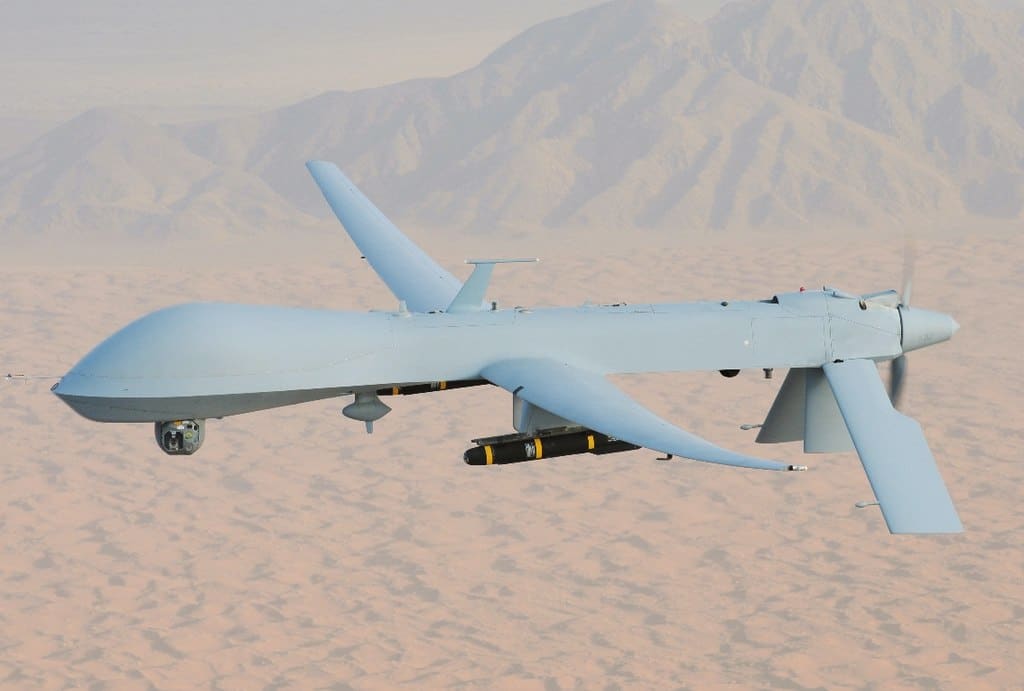Aerospace
India to buy 31 Predator drones from the US for $3.5 bn

India has successfully negotiated a big contract to buy 31 Predator drones estimated to cost around $3.5 billion or almost Rs 29,000 crore. During the Prime Minister’s current state visit to the United States from June 21 to 24.
A scientific analysis by the tri-services integrated defense staff, which found that India would need this many drones to effectively monitor its adversaries in both peacetime and combat situations, served as the foundation for the decision to acquire these unmanned aerial vehicles (UAVs).
India is currently developing 5 UAVs that it plans to use in the future.(Opens in a new browser tab)
The Predators, also known as the MQ-9 Reaper, can fly for up to 36 hours straight and are employed for targeted surveillance of any target or region of interest. Up to 31 Predator drones, which India will shortly purchase from the US, would be operated by the three services collectively.
According to the officer, these drones will be put together in India through a partnership between Indian businesses and drone manufacturer General Atomics, which will produce some components here. The officer said, “The current figure for this is 8 to 9 percent, but there is potential to raise it to 15 to 20 percent.”
In order to serve nations like Australia and Japan as well, General Atomics will establish a comprehensive and cost-effective maintenance, repair, and overhaul (MRO) facility in India. Within a period of one to two years the contract’s signing, India hopes to introduce the first 10 MQ-9B drones, depending on General Atomics’ production capacity. Every six months, remaining drones will be introduced in batches.
The MQ-9B Reaper drones have strike missiles that can completely and accurately destroy enemy targets, making them high-altitude, long-endurance drones. In addition, these drones will be used for long-range surveillance around the nation’s borders and in its marine regions. For long-range, precise strikes, the drones are fitted with air-to-ground missiles and smart bombs.

Aerospace
When Ratan Tata was denied entry to the airfield at the Aero India show, he waited

During our visit to Aero India 2019, we had the unexpected opportunity to see Ratan Tata at the event, which was a thrilling moment for us. However, there was a surprising hiccup when the security staff didn’t allow him to enter due to a lack of a security pass.
Despite this, he remained calm and patiently waited for about 20 minutes until a member of the Tata team brought him the required pass, after which he calmly proceeded inside. It was a humbling sight, showcasing his composed demeanor even in such situations.
Ratan Tata ji is not only a renowned industrialist but also a trained pilot, holding a pilot’s license. In 2007, he became the first Indian civilian to fly the F-16 Falcon during the Aero India show in Bangalore—a proud moment for the nation.
His passion for aviation extended beyond flying, as he played a key role in shaping India’s aerospace industry. Under his leadership, Tata ventured into manufacturing and maintaining aerospace components while upholding its legacy of quality. Notably, Tata’s collaboration with Airbus to develop and manufacture the C295 aircraft is a testament to its growing influence in the sector.
-

 Aviation2 months ago
Aviation2 months agoMicrosoft Flight Simulator Raises $3 Million to Bring Back the An-225 Mriya
-

 Airlines2 months ago
Airlines2 months agoQatar Citizens Can Travel to the United States Without a Visa
-

 Aviation2 months ago
Aviation2 months agoQatar Airways bans these new Electronic Devices on plane
-

 Airlines2 months ago
Airlines2 months agoJapan Airlines Rolls Out Free Domestic Flights to International Passengers
-

 Defence2 months ago
Defence2 months agoWhich Country Has the Largest Fleet of Fighter Aircraft?
-

 Airport2 months ago
Airport2 months agoWestern Sydney Airport Welcomes Its First Plane After 6 Years of construction
-

 Airlines4 days ago
Airlines4 days agoDAMAC Air: Dubai’s New Luxury Airline Offers Free Flights for Registration
-

 Aviation2 months ago
Aviation2 months agoDid you know ? Once Boeing 747 carried 1088 passenger in 1991








